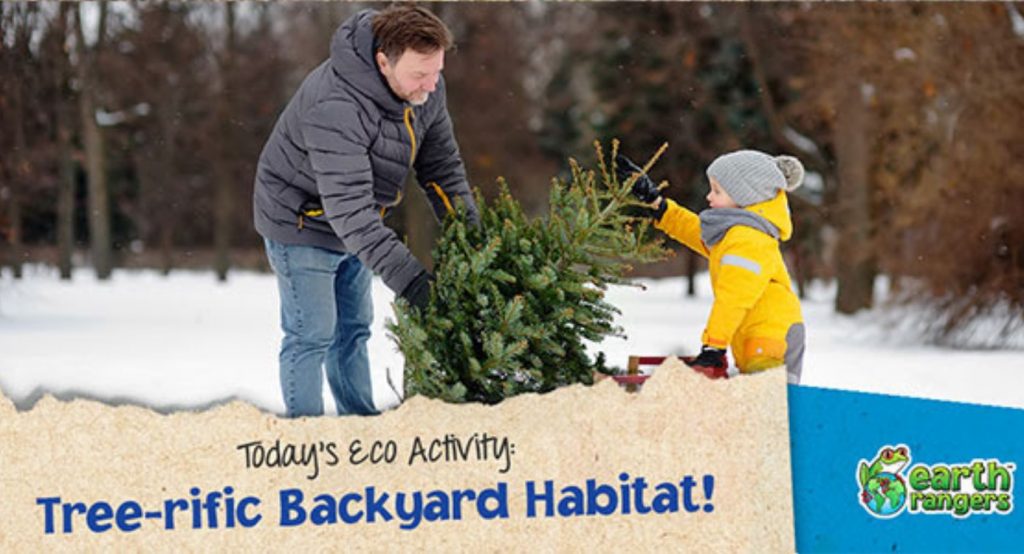
Tree-rific Backyard Habitat
Did your family celebrate last month with an indoor tree? If you’d like to prolong the holiday spirit and share the gift of giving with wildlife, our friends at Nature Conservancy of Canada (NCC) have a suggestion. Instead of bringing your decorative indoor trees to the curb, try putting it in your own backyard for the winter to provide benefits for backyard wildlife. Your tree can provide important habitat for bird populations and other backyard buddies during the winter months, especially on cold nights and during storms.
Prop it up near another tree, against a fence, or lay it in your garden. You can even get the family involved by redecorating it with filled with homemade bird feeders to provide food for birds while they find shelter in the tree.
This gift of nature will last through several seasons! In the spring when the tree loses most of its needles, cut the tree branches and lay them where spring flowers are starting to emerge in your garden. Place the trunk on soil, but not on top of the flowers. The tree branches and trunk can provide habitat, shelter wildflowers, hold moisture, and help build the soil, mimicking what happens with dead trees and branches in a forest. Toads will seek shelter under the log, and insects will burrow into the wood. Then, by fall, the branches and trunk will begin to decompose and turn into soil. The more contact the cut branches and trunk have with the ground, the quicker it will decompose. Drilling holes in the tree trunk will speed up that process.
Our backyards are ecosystems of their own and provide an opportunity to learn about forest ecology.






amazing!!!!
Great idea Earth Rangers!
Hey! Our family did that!
You can also put aloe vera or a root hormone on the base where it was cut and it will maybe grow roots!
Smart idea!
I’ve done that before!